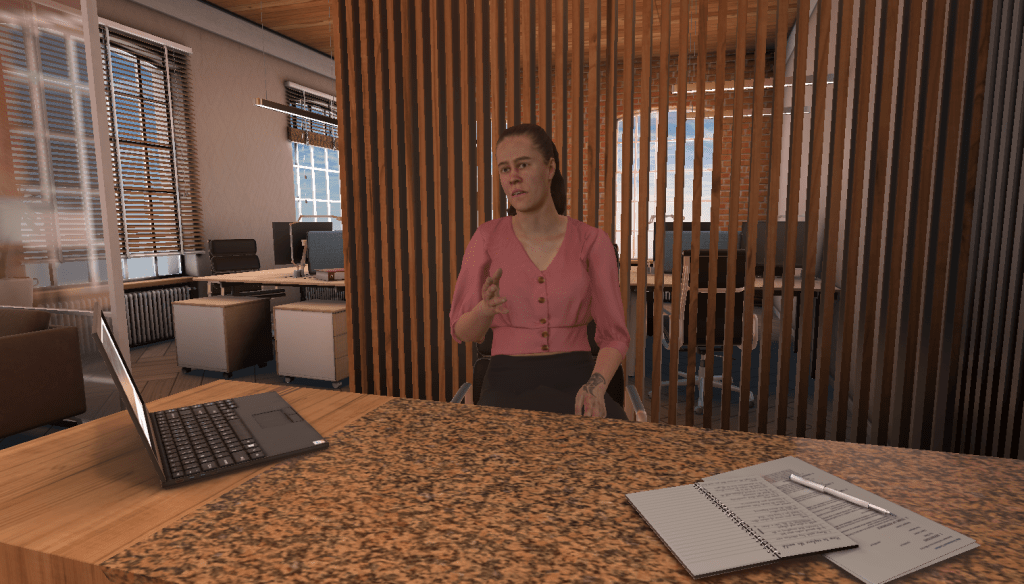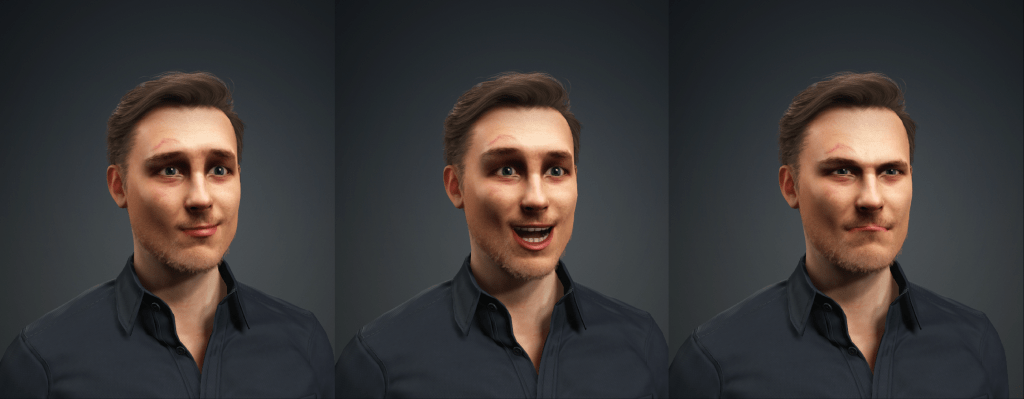Virtual reality (VR) has become an increasingly popular tool for training and education in a variety of fields. From healthcare and military to customer service and sales, VR offers a unique and engaging way to learn and practice new skills. One crucial aspect of VR training is the realism of the virtual environment and the characters within it.
In this blog post, we will discuss the importance of realistic 3D characters in VR training and how they can enhance the user experience. As well as techniques that can be used to improve rigid character animations that invoke a greater emotional response.
Why are Realistic 3D characters Important for VR Training?
One of the key advantages of VR training is the ability to create immersive and realistic virtual environments that simulate real-life situations. This can help users feel like they are truly interacting with another person or object in a natural setting, leading to better retention of information and a deeper understanding of the material being taught.
Realistic 3D characters can play a crucial role in creating this immersive experience. By using modern 3D modelling and animation techniques, it is possible to create characters that look and behave like real people. This can help users feel like they are truly interacting with another person, rather than just an image on a screen, improving the overall believability of the virtual environment.
For example, a VR training program for customer service could use realistic 3D characters to simulate customer interactions. The characters could have natural facial expressions and body language, making the training feel more like a real-life situation. This can help users better understand how to handle different types of customers and improve their communication skills.
Using realistic 3D characters in VR training can also help create more diverse and inclusive virtual environments. It is possible to create a collection of characters with a wide range of physical appearances, gender identities, and ethnicities – this can help make the training more relatable and accessible to a wider range of users and address possible bias.

The Benefits of Learning from Characters and Other People
Learning material presented in the form of a character or person can be a more engaging and effective way of teaching compared to simply reading a book alone. Here are a few potential benefits of being taught content this way:
- Personal connection: When the material is presented through a character or person, it can be easier for students to connect with and relate to the content. This personal connection can make the material more memorable and engaging for the student.
- Real-world examples: Characters and people can provide real-world examples of the concepts being taught. This can help students see the relevance of the material and better understand how to apply it in their own lives.
- Engagement: Characters and people can add an element of excitement and interest to the material being taught. This can help keep students engaged and motivated to learn, leading to better retention of the material and willingness to learn.
Conveying Emotion
Realistic human character animation is a complex task that requires attention to a wide range of details. From the movements of individual body parts to the subtleties of facial expressions, animating a human character in a way that looks natural and lifelike is a challenging endeavour.
When characters in a virtual reality experience are convincingly animated, they can help create a more immersive and engaging experience for the user. This can make it easier for the user to suspend their disbelief and become fully immersed in the virtual world. Convincing character animation helps to convey emotions and body language in a way that is easily recognizable to the user. This can help users better understand the characters’ motivations and actions, which can make it easier for them to learn from them.

Motion Captured Performance
Motion capture, also known as mo-cap, is a technique used in the film and video game industries to capture the movement of real-life actors and apply it to digital characters. This allows for more realistic and lifelike animation, as the movements are based on those of real people.
Full motion capture, including facial performance, allows for even greater realism in animation. By capturing not only the movements of the body but also the subtle facial expressions and movements of the face, animators can create incredibly lifelike digital characters. This is particularly important in the creation of characters that are meant to be human, as facial expressions are a crucial part of human communication and can greatly affect the believability of a character.
Concluding Thoughts
In conclusion, realistic 3D characters are crucial for creating immersive and engaging VR training experiences. They can help users feel like they are truly interacting with another person, leading to better retention of information and a deeper understanding of the material being taught. By using realistic 3D characters, VR training can be more inclusive, relatable, and effective for a wider range of learners.

